Scotch Thistle
Information
Onopordum acanthium - Asteraceae Family - Biennial
Other common name: Cotton Thistle
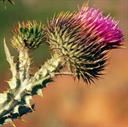
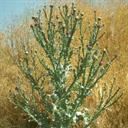
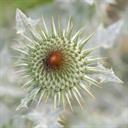
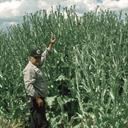
Identification
- Flowers: Plants are covered with 1” spiny purple flowers.
- Seeds: Plants produce up to 6,000 seeds annually with seeds remaining viable in the soil up to 5 years.
- Leaves: Up to 2 ft long and covered in cottony/ woolly hairs with spines on the margins.
- Flowering Time: June - September.
- Life cycle/ other: Biennial growing up to 8 feet tall and 3 feet wide.
Impacts
- Scotch thistle primarily invades disturbed lands.
- Its rapid growth and large size reduce available resources for smaller plants. It competes with and decreases desirable forage and can form a dense monoculture stand.
- It can act as a living barbed-wire fence, preventing livestock and wildlife access to feed and water.
Control
Most effective control methods
- Prevention of this plant's invasion is the best management. Control plants before they flower and set seed.
- Control of these plants must include preventing new seed dispersal for 6 years.
- For small infestations the best method for removal is digging plants out by hand.
- For larger infestations the use of herbicide on young plants is effective in the rosette stage before flowering prevents seed set. Picloram and metsulfuron offer excellent control.
- In both small and large infestations, plant competition by seeding disturbed areas with desirable grass species that will compete for resources but not be affected by the broad leaf herbicides is best for long-term management.
Control methods and timing
| March | April | May | June | July | Aug | Sept | Oct |
|---|---|---|---|---|---|---|---|
|
Prev |
Prev Chem |
Prev Chem |
Mech |
Mech |
Mech |
Mech Chem |
Mech Chem |
Prevention (Prev) Monitor and destroy new plants before seed production.
Mechanical (Mech) Hand pulling, digging, cutting, mowing and tilling.
Cultural (Cult) Biological control agents, livestock grazing, and revegetation practices.
Chemical (Chem) Selective herbicides based on the plant and the specific location. Check our weed fact sheets for specific control information.
Large Images
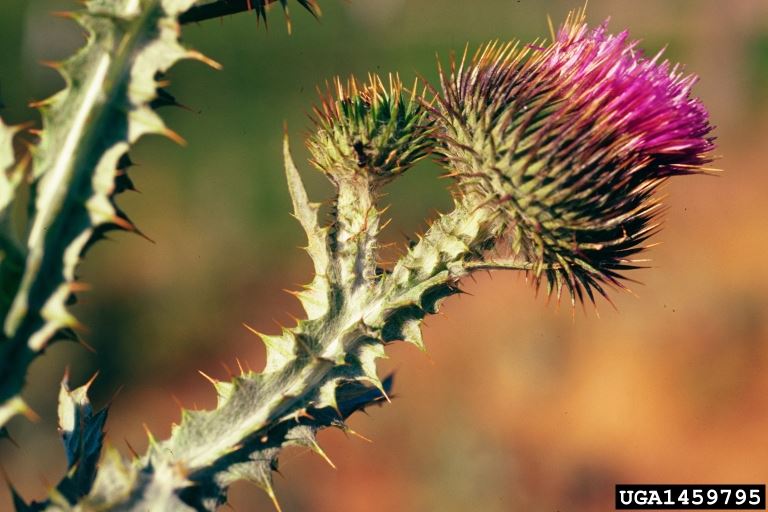
Scotch thistle: flower
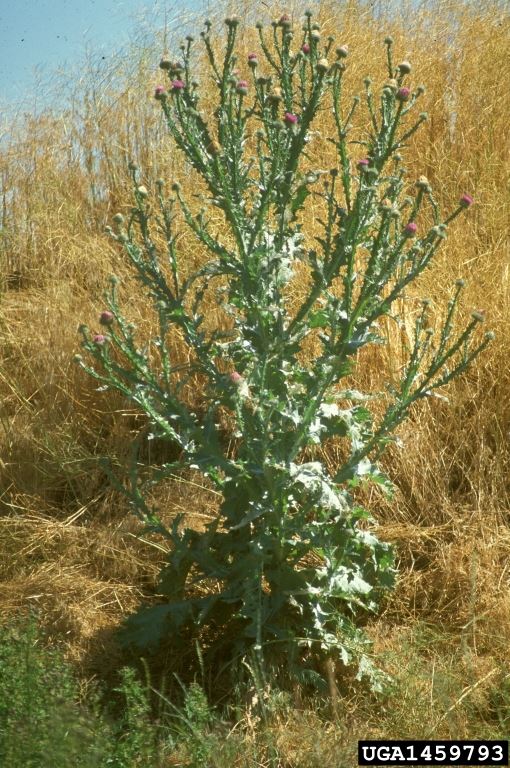
Scotch thistle
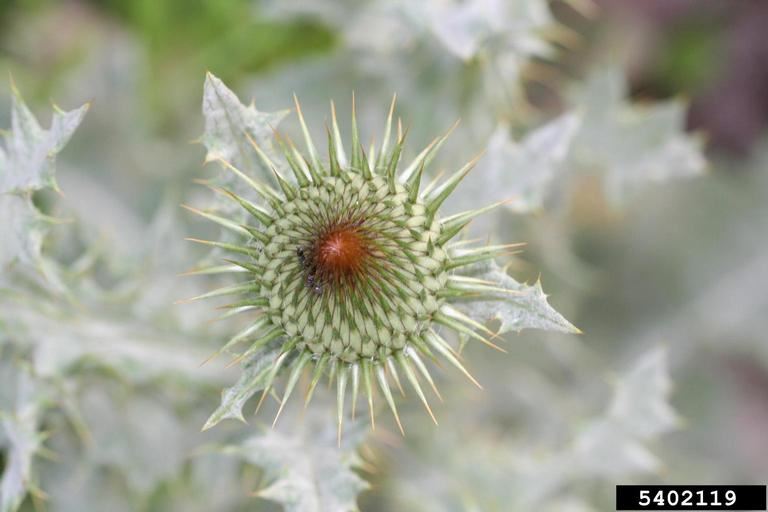
Scotch thistle: flower
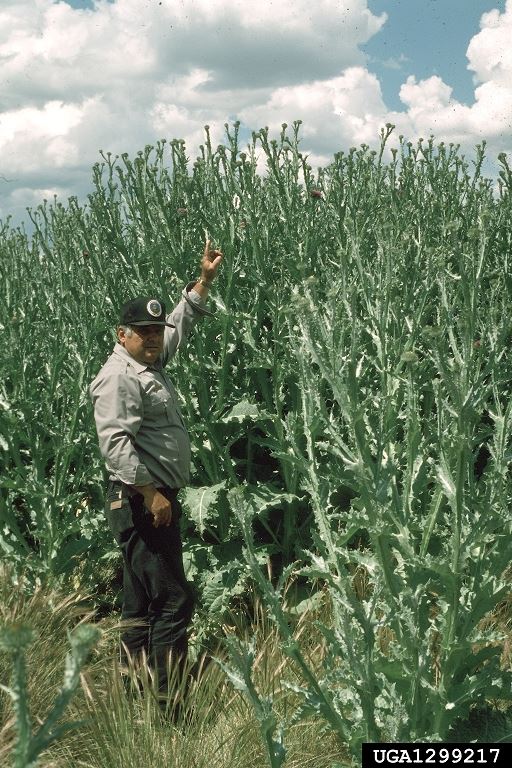
Scotch thistle: infestation
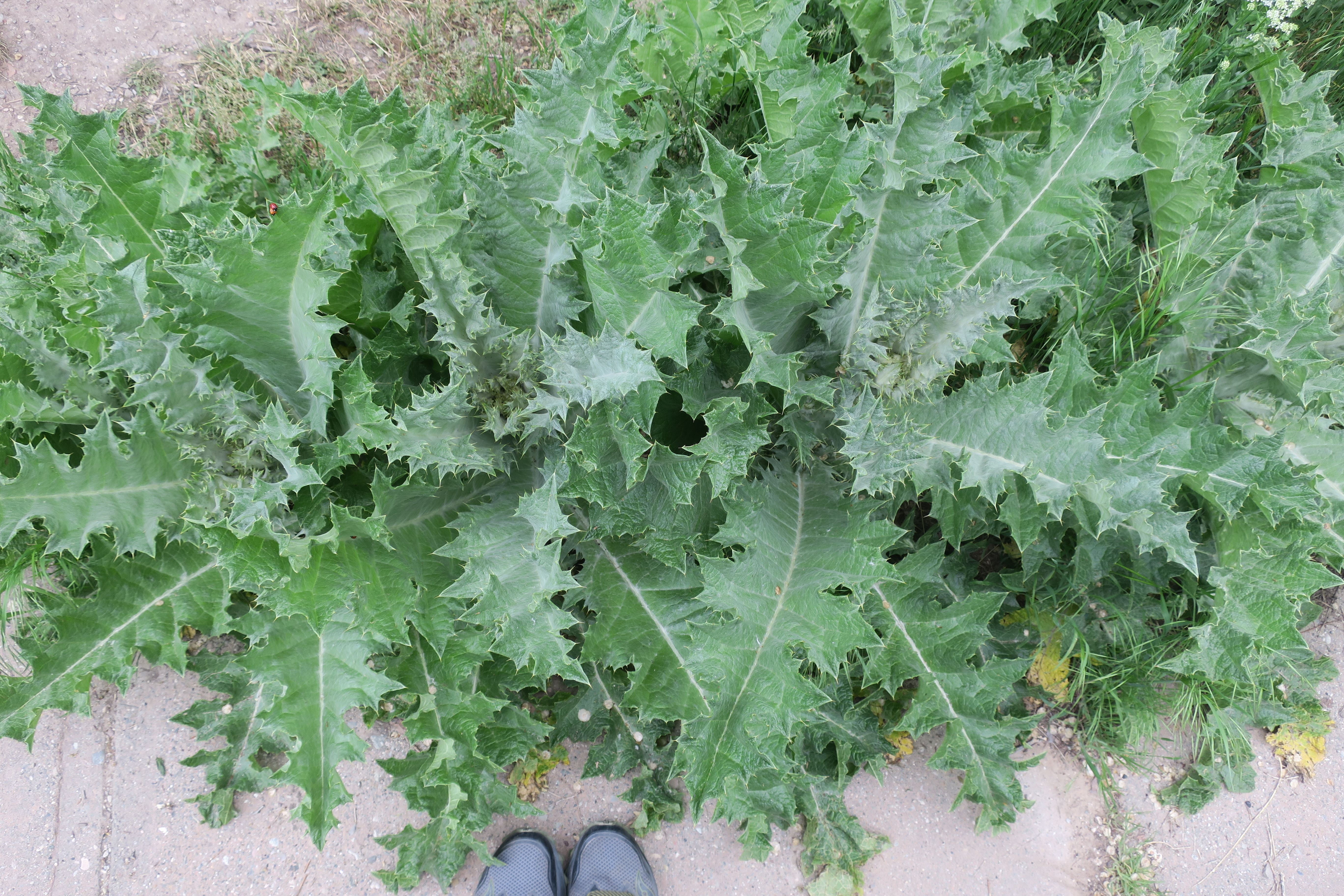
Scotch thistle: rosettes
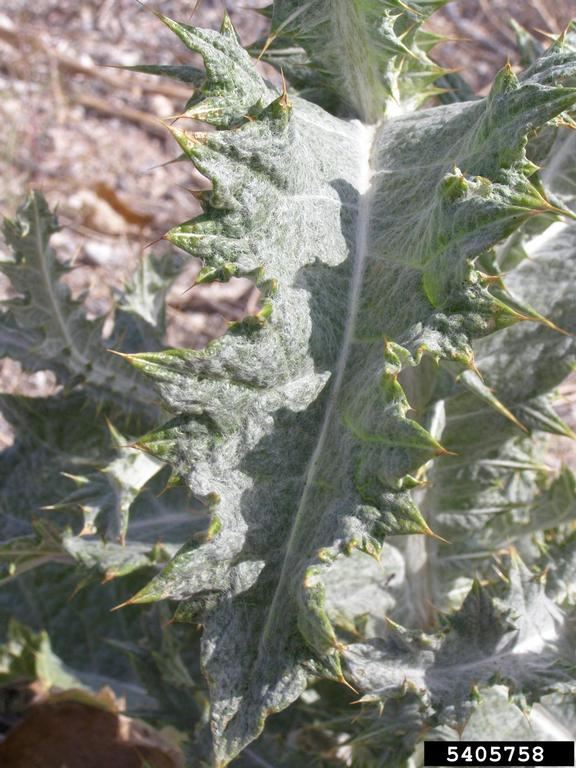
Scotch thistle: foliage
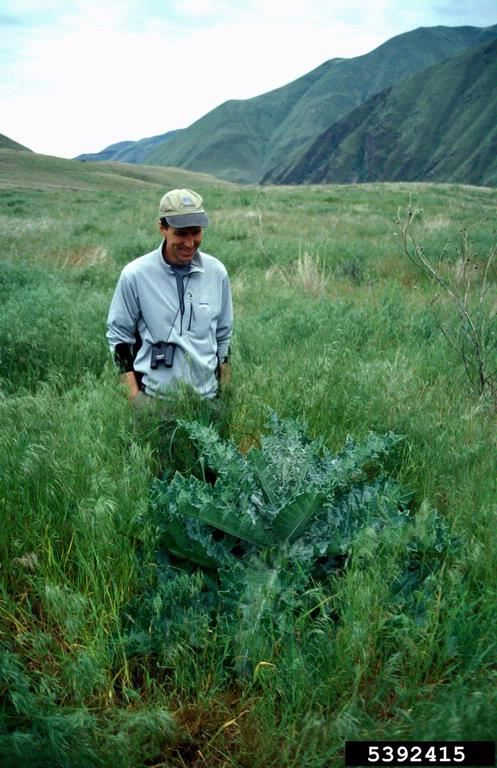
Scotch thistle: rosette
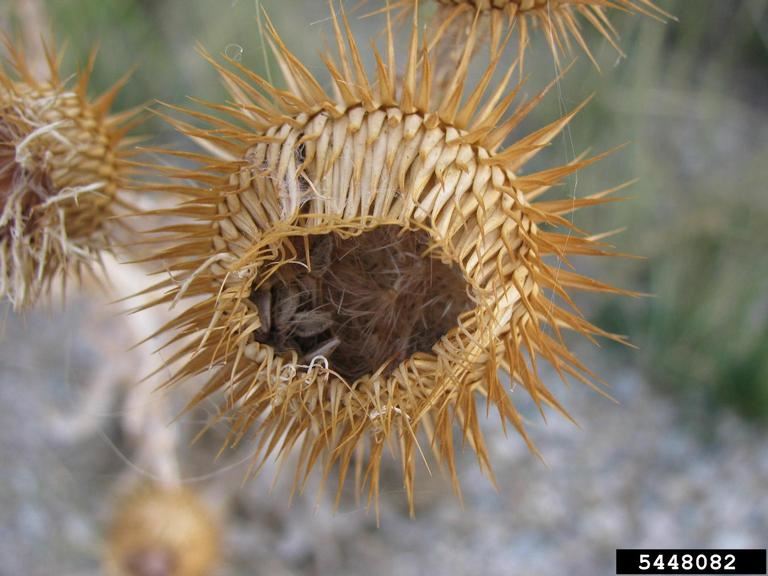
Scotch thistle: seeds
Resources
-
-
References
DiTomaso, J.M., G.B. Kyser et al. (2013). Weed Control in Natural Areas in the Western United States [PDF file]. Weed Research and Information Center, University of California. Retrieved from https://wric.ucdavis.edu/information/natural-areas/wr_O/Onopordum.pdf View PDF
Duncan, C. (2016, September 1). Managing Scotch thistle on rangeland and natural areas. Retrieved from https://www.techlinenews.com/articles/2016/managing-scotch-thistle-on-rangeland-and-natural-areas
Invasive Species Compendium. (2017, November 22). Onopordum acanthium (scotch thistle). Retrieved from https://www.cabi.org/isc/datasheet/37456
Kadrmas, T. & Johnson, W. Managing Scotch Thistle [PDF file]. Retrieved from https://www.unce.unr.edu/publications/files/nr/2002/FS0257.pdf View PDF
United States Department of Agriculture. (2014, September). Field Guide for Managing Annual and Biennial Invasive Thistles in the Southwest [PDF file]. Retrieved from https://www.fs.usda.gov/Internet/FSE_DOCUMENTS/stelprdb5410130.pdf View PDF




